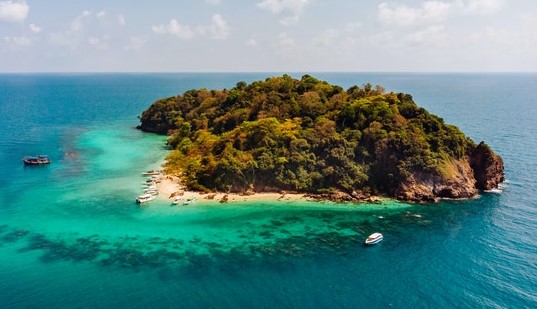Shelly Island, off the coast of North Carolina, in the eastern Atlantic Ocean, reappeared, two years after its sudden disappearance.
According to British newspaper Daily Mail, Buxton beachgoers had found a sandy beach approximately 98 feet a few days ago in the same place that was occupied by Shelley Island.
The official page of the Cape Hatteras National Beach, which is managed by the US National Park Service, published photos showing the island's appearance again, as pictures showed groups of birds landing on their sands to enjoy the warm sun.
Page officials advised beachgoers not to reach the island because of the deep and cold waters of the place, and create dangerous currents between it and the waters of Cape Point Bay, and there are likely to be wildlife hazards as well.
The locals considered the return of the island of Shelly a joyful event that brought happiness to their hearts, amid news of the outbreak of the Coronavirus in the country.
Shelly Island was formed for the first time in January 2017, opposite Cape Point Bay in Buxton Beach, when it was 400 feet long, but it disappeared a year after its appearance after being subjected to a series of storms.
And when the island was formed in 2017 AD, beach scientists confirmed that the five-foot sharks and the large size nation were caught spawning the shallow waters of the island.
The experts added: It is not certain whether the island can continue to grow in size or will disappear in the event of a subsequent storm.
And NASA had released photos of the island of Shelly, taken by satellite during the years: 2016, 2017 and 2018, showing the stages of the emergence and disappearance of the island of Shelly.
The reasons for island formation and development are complex and not entirely clear, said Catherine Hansen of NASA's Earth Observing Program.
Hansen indicated that the coast scientists speculated that the weather conditions behind its formation in 2017 were correct, as the winds were strong enough to excite the waves and currents that carry sand along the beach from the islands in the far north towards the Gulf, then the winds became calm enough to stop this transport Sandblasting. Then the sand piled up, the island grew, and tourists flocked to the area to watch the new scene.
It is reported that the sandy hump of Shelly Island was named after that because it was full of seashells when it first appeared.

Post a Comment